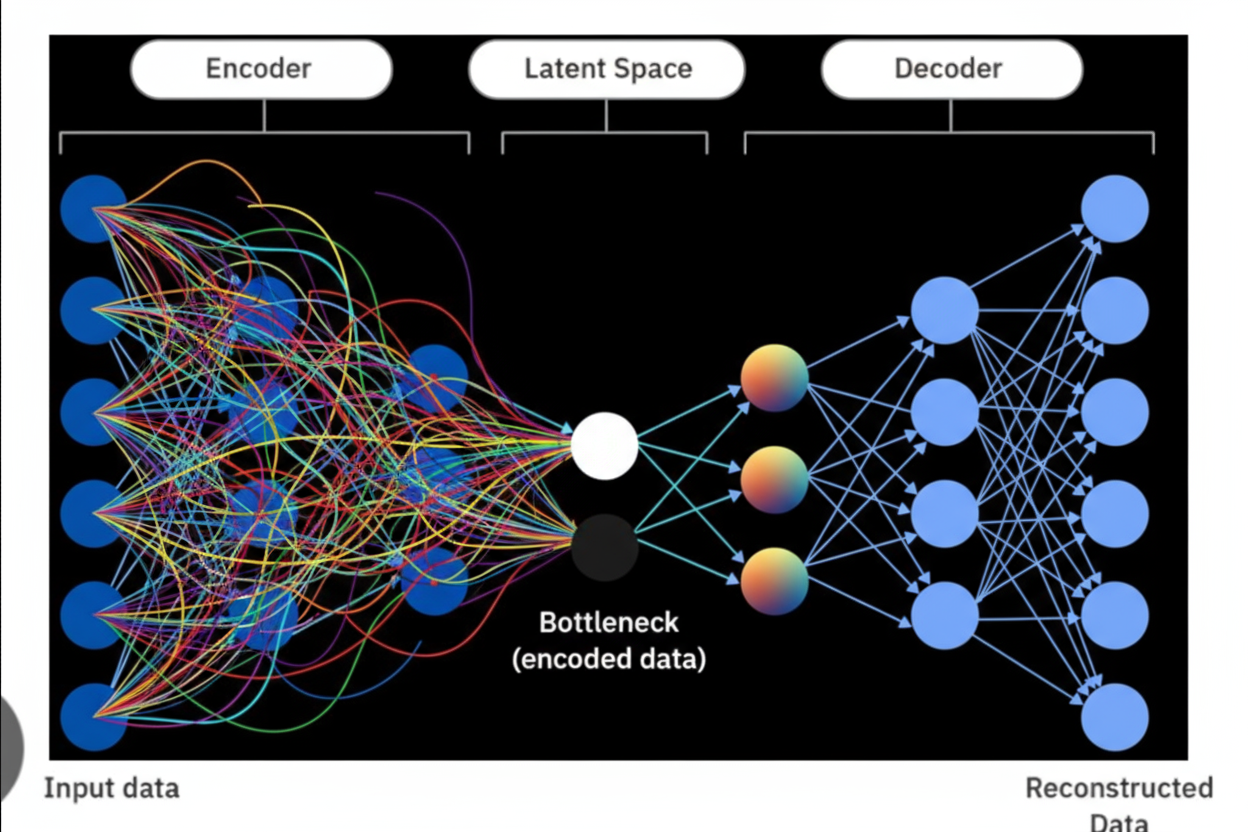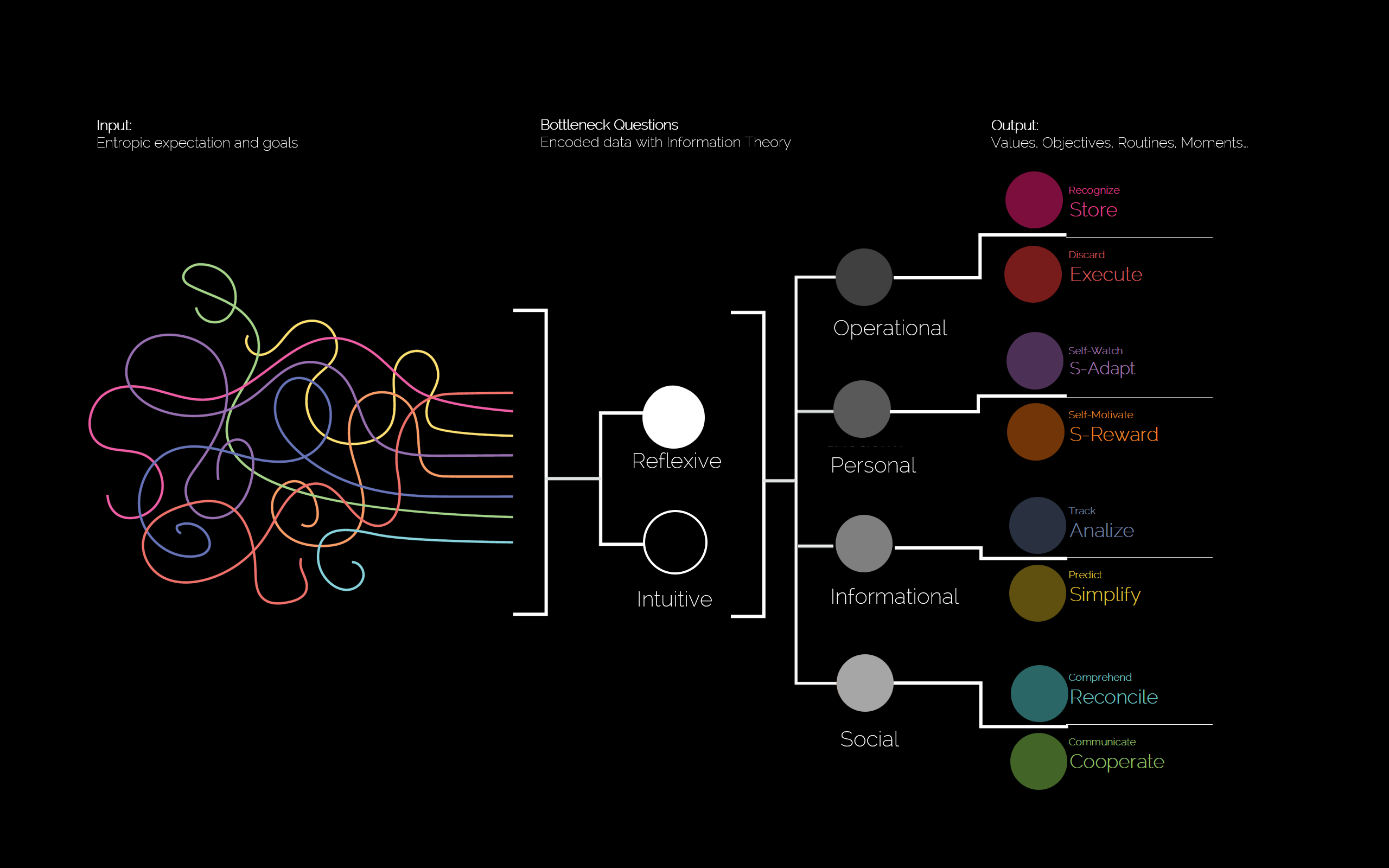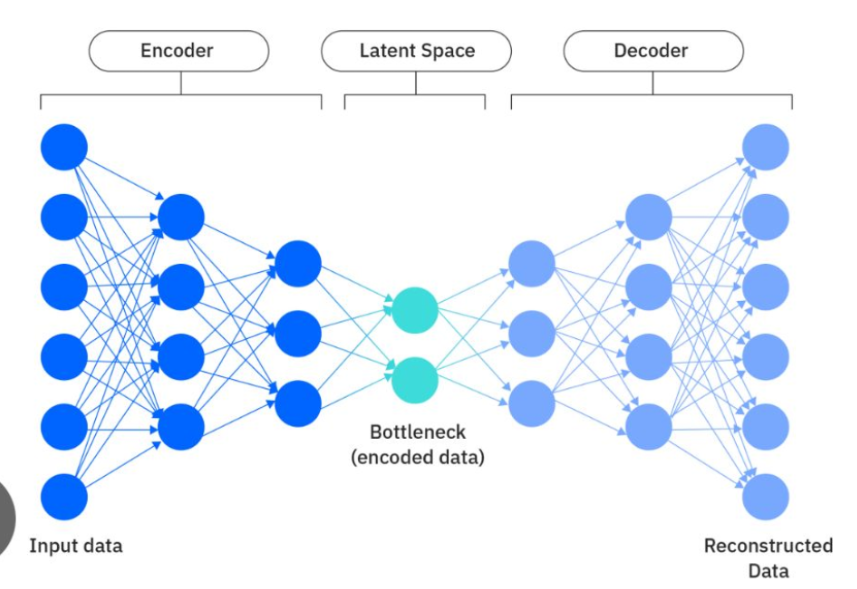In this 3-minute reading proposal, I would like to look for characteristics that can minimize an individual's uncertainty and complexity, starting with goal-setting methods using AI-inspired methods. The idea is to find key questions that can break down the complexity of desires and expectations to form more solid missions, visions, values, objectives, tasks, or reassessments.


I want to study its scope with a focus on people who need more substantial improvements: young people in rehabilitation. [1]
I would like to help analyzing the potential flaws in this method and perhaps finding potential collaborators. To facilitate, I'm posting the claims made with llm here.[2] For now, I will continue with an illustrated introduction to acclimatize the idea of the method.
Problem
The irony: people tend to write their mission as functions… but they don’t even name their underlying dimensions.
I work with people in recovery who often struggle with mission, vision, values, and goal setting. Their objectives seem uncertain, overwhelming, and abstract with traditional approaches. However, there are uncertainty-friendly methods that can help identify key questions to simplify complex data, such as in a person's life.
Context
The AIs were trained with our data and make mistakes similar to ours, such as bias, blackmail, and deception. That's why we've created incredible methods to correct them so they make fewer mistakes.
A exemplo of key cuestions method
There are uncertainty-friendly methods that can help you find key questions to reduce complex data like a person's life. For example, the Fermi estimate allows a less error-prone approximation of the number of piano tuners in England without having any precise numbers. Starting with mayor data and doing some questions to refining:
How many people are there likely to be in the world?
How many people are there in Europe?
How many are interested in music?
How many musicians?
How many piano players?
How many tuners?
The idea is to ask key questions to reduce uncertainty and encourage user to seek evidence and make estimates and graphs.
A complete example of application of the method, here.
Why not apply some of these methods to people who need extreme improvements?
Invitation

We can then apply similar methods to narrow down the thousands of factors—operational, developmental, emotional, informational, social—that shape an individual's goals and subsequently establish a more accurate basis for self-assessment in an app. Are you interested in these topics?
Conclusions
With that introduction, I'd like to find people interested in setting personal goals and analyzing moments using information theory and know if I can use it as a good first step to create a personal planner for users to define goals using information theory, which I'm currently calling: keyMetas.
What I've done so far:
- A moment analysis apk that analyze moments that I'm adapting to analyze goals.
- Latent value model with its informational and evolutionary basis
- Scientific study model
- A printed paper model (with a design cooworker)
- A graphic design thesis at the University of La Plata to disseminate the method. (of a cooworker)
- A postgraduate degree in neuroscience, with a thesis defense that received top marks in motivation and satisfaction human factors.
- I've been applying an evolution of this method to myself for eleven years in sheets.
- Four year study of information systems to develops this method.
With this foundation, we could create scabilizemodels to prioritize:
- Visions,
- missions,
- values,
- goals,
- routines,
- priority factors at a given moment.
Next steps:
- Launch apk on Play Store
- A new model printed in paper.
- Clinical tests and supervision
Each part of the project will be sent separately: latent value model (informational and evolutionary basis), scientific study model, open-source app on GitHub with theoretical framework and scoring formulas.
- ^
Attention: The post’s idea could be a promising as an organizing metaphor and a design pattern; however, it is not a validated therapeutic intervention. For the intended population (young people in rehabilitation) clinical oversight, IRB or ethics review, and rigorous testing are essential before deployment. The AI-compression analogy should not be treated as empirical evidence that human goals can be compactly represented without loss — it is primarily a conceptual guide.
- ^
Claims:
- The author wants to find people interested in setting personal goals and analyzing moments using information theory.
- The author wants help analyzing potential flaws of this method and finding colleagues.
- The author is developing an app that uses AI-inspired methods to study reach in people seeking significant improvements (young people in rehabilitation).
- The author works with young people in rehabilitation who struggle with goal-setting because objectives feel overwhelming and abstract.
- Traditional approaches ask people to define goals, but for people with addiction/trauma/behavioral issues, “get my life together” isn’t actionable.
- The method could help users find underlying structure of their goals (“latent values”) and build practical steps.
- It applies information-theory compression concepts to human.
- The author provides an illustrated introduction and says technical details/proofs/script/shipping are available on request.
- The quoted idea: If AIs are like our children and we educate them, we could apply that education to ourselves. (quoted aphorism)
- AIs were trained with our data and make mistakes similar to ours (bias, blackmail, deception).
- That’s why methods were created to correct AIs so they make fewer mistakes.
- Why not apply some of these methods to people who need extreme improvements? (rhetorical question / suggestion)
- The author wants to seek characteristics that can minimize an individual’s uncertainty and complexity, starting with personal goals.
- The idea is to apply an approach similar to latent vectors in AI models: infer unobserved characteristics from observed data and correlate with latent values.
- If training an AI requires vectorizing uncertainty, we might offer similar methods to humans who need robust improvements.
- Personal goals have uncontable variables, so one way out is to find the most robust information: key factors of the goals.
- There are uncertainty-friendly methods to help (example: Fermi estimate) which allow less error-prone approximations without precise numbers.
- Example of Fermi decomposition: successive questions narrowing from world population down to number of piano tuners.
- The idea is to ask key questions to reduce uncertainty and encourage users to seek evidence and make estimates and graphs.
- The same method can narrow thousands of factors (physical, developmental, emotional, informational, social) that shape an individual’s goals and establish a more accurate basis for self-assessment in an app.
- The app would produce a balance of latent values necessary for goals.
- Asks: what if personal goals could be compressed into their latent values? (rhetorical)
- Conclusions: the author invites help and collaboration to create a personal planner using information theory, currently named “keyMetas.”
- Each part of the project will be sent separately: latent value model (informational and evolutionary basis), scientific study model, open-source app on GitHub with theoretical framework and scoring formulas.
- The author wants to find people interested in setting personal goals and analyzing moments using information theory.